Corpus Christi in Stained Glass

by Glen McCullough
The feast of The Most Holy Body and Blood of Christ, Corpus Christi, is celebrated this year on 18 June. Essentially, it is a special rejoicing in the Eucharist.
The Eucharist was instituted at the Last Supper. There is an account in all four Gospels, although John’s Gospel omits the specific institution, concentrating instead on Judas’ betrayal.
There are countless windows depicting the Last Supper in a traditional way. The one below [1], from Cathedrale Notre Dame, Moulins, France, is typical. Note John cuddling up to Jesus, and Judas, without a halo, escaping with his bag of money.
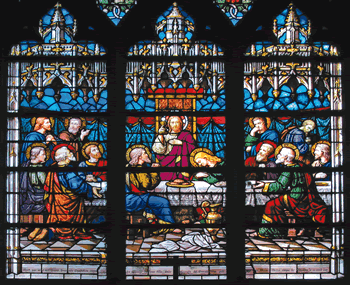
1
The window from Moulins is unique, however, in that it has the names the apostles written in their halos.
A more modern traditional representation [2] is from St Patrick’s Catholic Cathedral, Armagh, Northern Ireland. John is resting on Jesus' shoulder, and Judas, again without halo, is leaving, at top left.
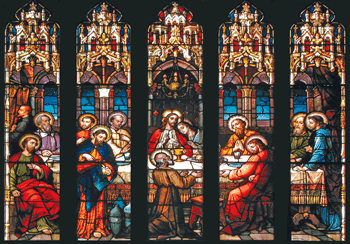
2
The window [3] from San Francesco di Rivortorto, Assisi, is as I imagine the scene to be. The table would have been low, with the apostles dressed in their everyday clothes, sitting or kneeling on the mats provided. Judas is immediately on Jesus’ right, clutching his money bag.
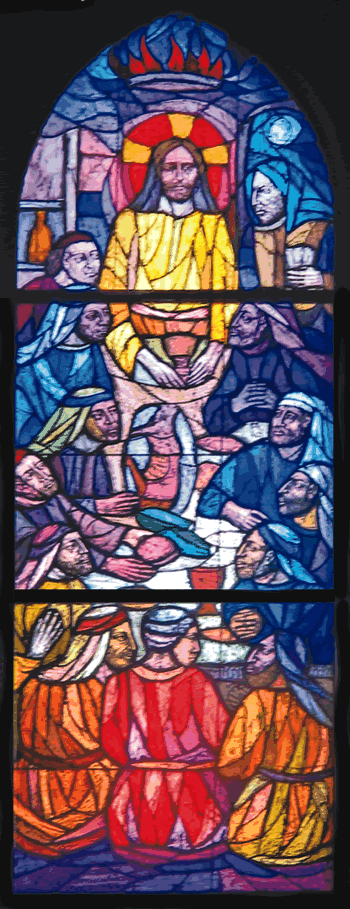
3
I have seen two beautiful semi-circular windows of the Last Supper. One was in the ruined Christchurch Cathedral, and this one, [4] in the Cathedral of St Mary the Crowned, Gibraltar.
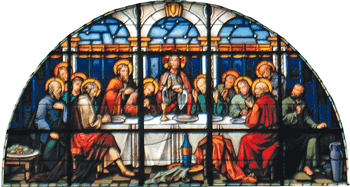
4
But my favourite is the window with the 'WOW' factor that takes up half the back wall of the Chapel at St Patrick’s College, Silverstream [5]. It is stunning. Every priest must see it behind the Host and Chalice as he holds them up after the consecration.
None of the artistic representations I have shown so far speak to me of what actually happens at Mass: the bread and wine become the Body and Blood of the Risen Christ - the Corpus et Sanguis Christi - that I receive at communion.
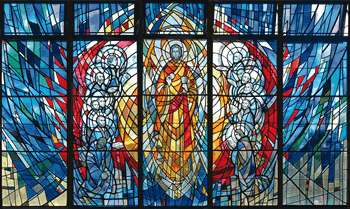
5
Stained glass artists have represented the Eucharist in various ways. The one below [6] was featured in the August 2015 Messenger. It is about 8 metres wide and is in Buckfast Abbey, south-east England. It is made of glass blocks chipped on the outside so the blocks act like a prism. When I saw it, I heard Jesus say 'Welcome, come in, rejoice.' To me, it is a perfect representation of the Body and Blood of Christ.
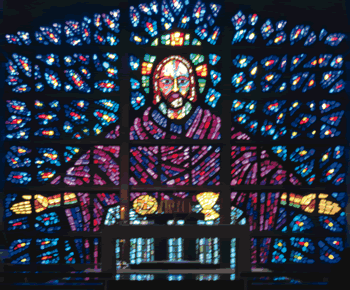
6

7
If you are looking for something very symbolic, look no further than [7], from Our Lady of the Sacred Heart, Alice Springs (thanks to Peter Dawson for the photo). It would take too long to explain the symblolism, but I am sure you can work it out for yourself. The stylistic one from Nelson Anglican Cathedral [8], in contrast, is very specific and needs no interpretation.
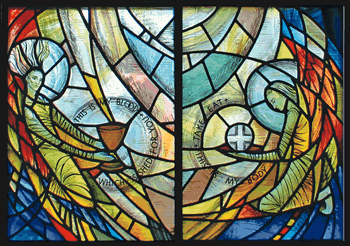
8
If it is traditional styles you like, the one below [9] in St Brendan's, Annandale, Sydney, could speak to you.
It is the simpler windows featuring the Eucharist that speak to me the most. The one below [10] is from Star of the Sea Church on King Island, Tasmania (thanks to Anne-Marie Thomson for the photo). The simple chalice and host set against the background of altar, land, sea and sky is very effective. The longer I look at it, the bigger the Eucharist seems to be, perhaps reflecting the growing importance of the Eucharist to me as I get older.
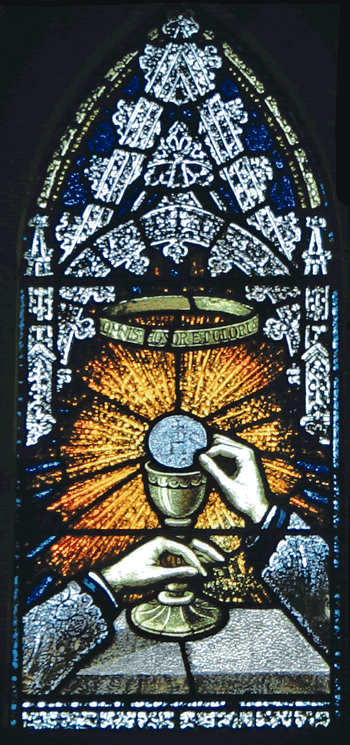
9
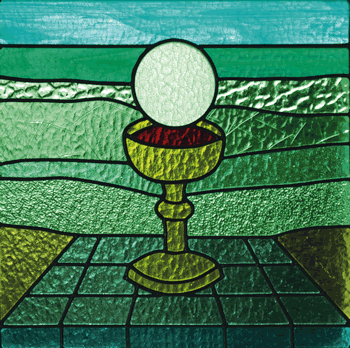
10
 Entries(RSS)
Entries(RSS)